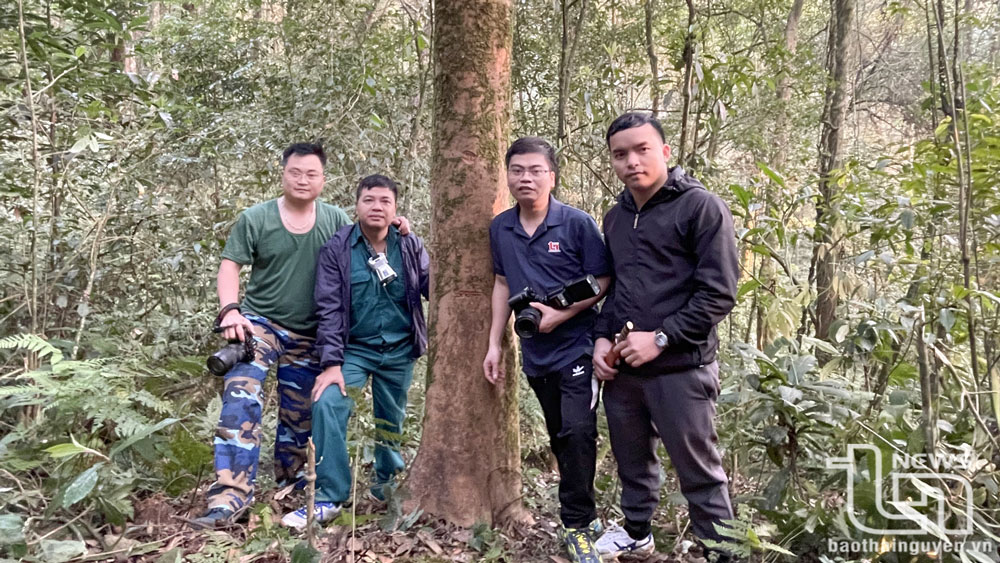 |
| 4 journalists of Thai Nguyen Newspaper (from left to right): Nguyen Ngoc, Duong Hung, Quoc Tuan, Hong Tam next to an ancient tea tree on the top of Tam Dao mountain, over 1,400m above sea level. |
Seeds of fate from ancient tea trees of Bong mountain
My relationship with ancient tea trees began with a survey trip in 2013, when I went up Bong mountain, Minh Tien commune (Dai Tu). That day, I saw with my own eyes a 25m high tea tree with a 150cm base circumference, spreading its shade in the middle of the forest - like a witness of a distant time. Ten years later, on the eve of Spring Quy Mao 2023, I returned to that place. The forest was still the same, the memories were still green, but a new urge arose in my heart when I accidentally heard about another ancient tea population, deep in the Tam Dao primeval forest in La Bang commune.
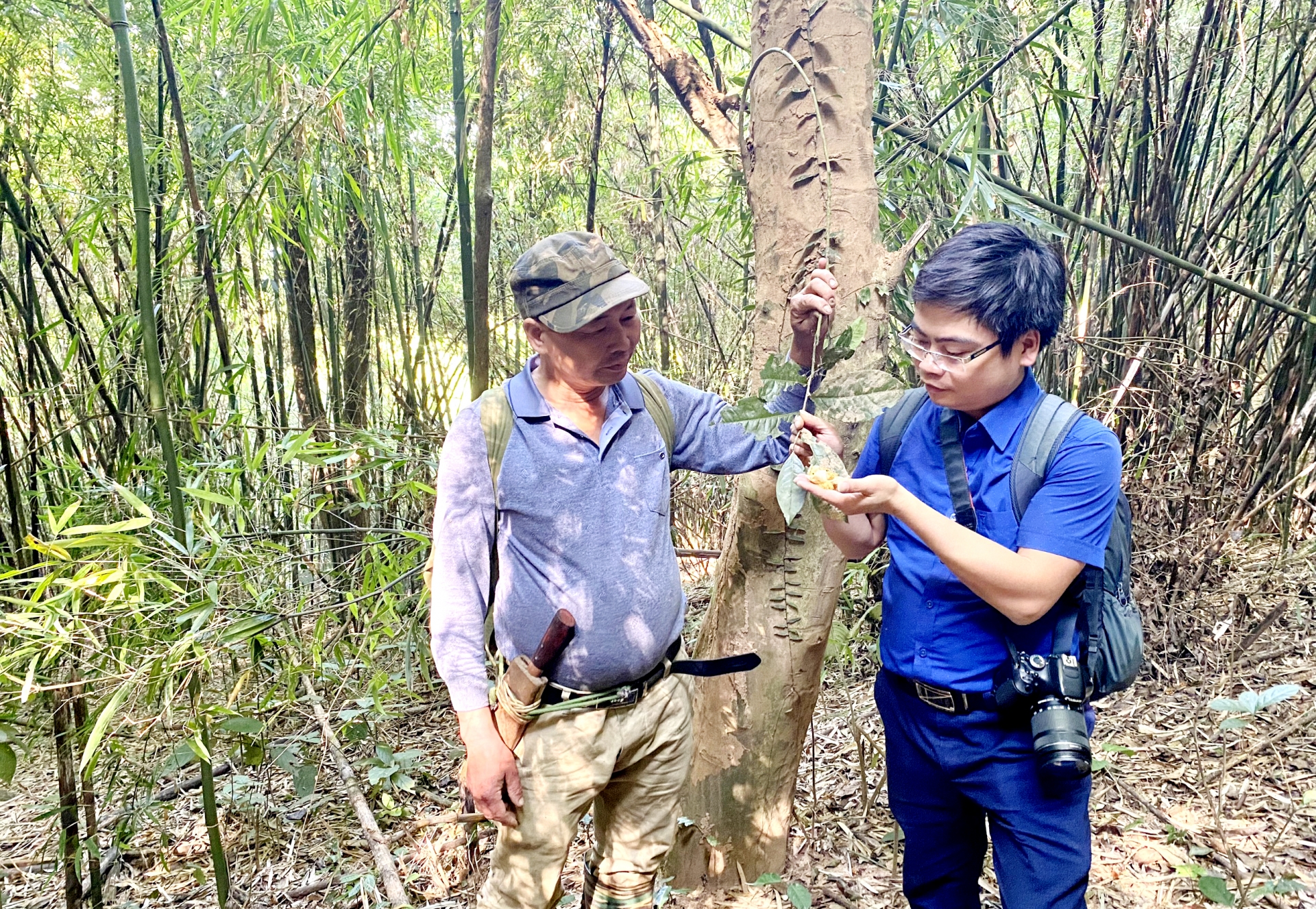 |
| Journalist Quoc Tuan (right) next to a hundred-year-old tea tree on top of Bong mountain, Minh Tien commune, Dai Tu district, Thai Nguyen province. |
I planned to go many times but could not. Sometimes it was the weather, sometimes there was a lack of a guide, sometimes work took me away... The trip was always in a jumble of plans. Until early 2025, when comrade Trinh Viet Hung, alternate member of the Party Central Committee, Secretary of Thai Nguyen Provincial Party Committee, directed the preparation of a dossier to recognize the ancient tea trees in Minh Tien as national heritage trees, that information was like a fire that rekindled my passion, "rekindling" the desire to touch the ancient tea trees that few people know about.
 |
| Journalist Quoc Tuan (right) interviews Associate Professor, Dr. Ha Duy Truong. |
I contacted Associate Professor Dr. Ha Duy Truong, Director of the Center for Training and Research on Plant and Animal Breeding (Thai Nguyen University of Agriculture and Forestry) - the unit in charge of implementing the project "Research, conservation and development of ancient tea tree genetic resources in Bong Mountain, Minh Tien Commune, Dai Tu District, Thai Nguyen Province". He could not hide his excitement. I called artisan Nguyen Thi Hai, President of Dai Tu Tea Association, the only woman who has ever set foot on Tam Dao peak to meet the "ancient tea master". She invited Mr. Truong Thuy Luan, Vice President of Dai Tu Tea Association. Mr. Luan used to trek through Tam Dao forest and has experience using specialized GPS in deep forests.
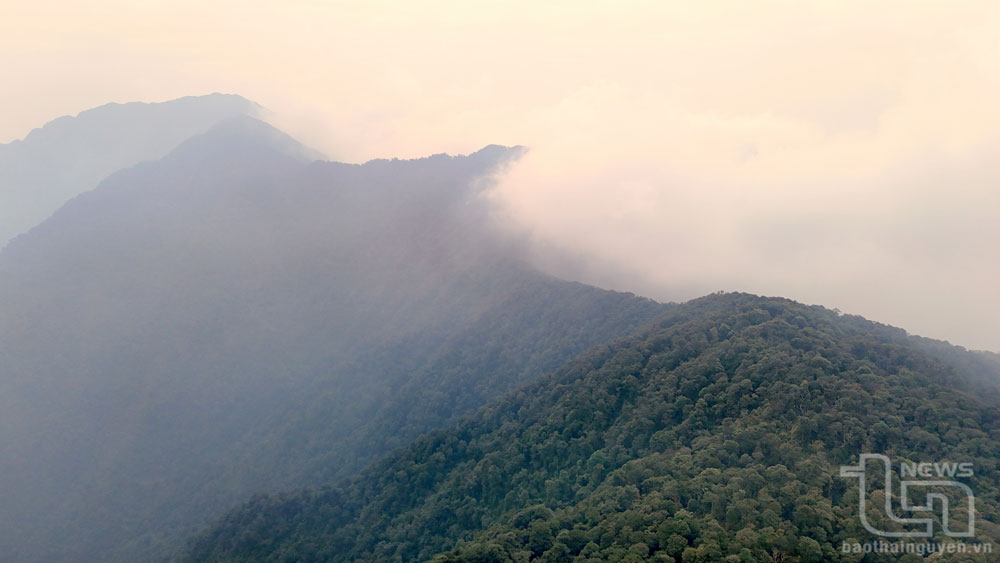 |
| The misty Tam Dao mountain peak is over 1,400m above sea level - a place that holds the mysteries of ancient tea tree populations. |
I started to piece together the connections: Scientists , artisans, locals, journalists - a "multidisciplinary" team for a special journey. About to leave, the four of us journalists gathered. Imagining the journey of carrying a backpack weighing nearly 15kg, with tents, sleeping bags, clean water, food, recording equipment, climbing 8 hours up the mountain, sleeping in the middle of the forest, 7 hours down the mountain and a warning from Ms. Hai: "There are sections close to the edge of the cliff, if you're not careful you'll fall.", everyone had certain worries but no one was discouraged or discouraged, but were determined to conquer the high mountain to find the ancient tea tree.
March, spring has not ended, the humidity continues. The weather is humid, the drizzle is persistent as if trying to keep the survey team here. After nearly 30 days of waiting, the weather is finally drier. Overcoming Associate Professor Truong's sudden toe injury and the busy work schedule of the team, we decided to set off on a morning at the end of March.
Carrying the sun, carrying the wind, going against the forest
At 7:30 a.m. on March 22, 2025, the foot of Tam Dao mountain welcomed our footsteps. Some carried cameras, some carried video cameras, some carried measuring equipment, GPS, belongings, sleeping bags... Each person carried a large backpack on their shoulders.
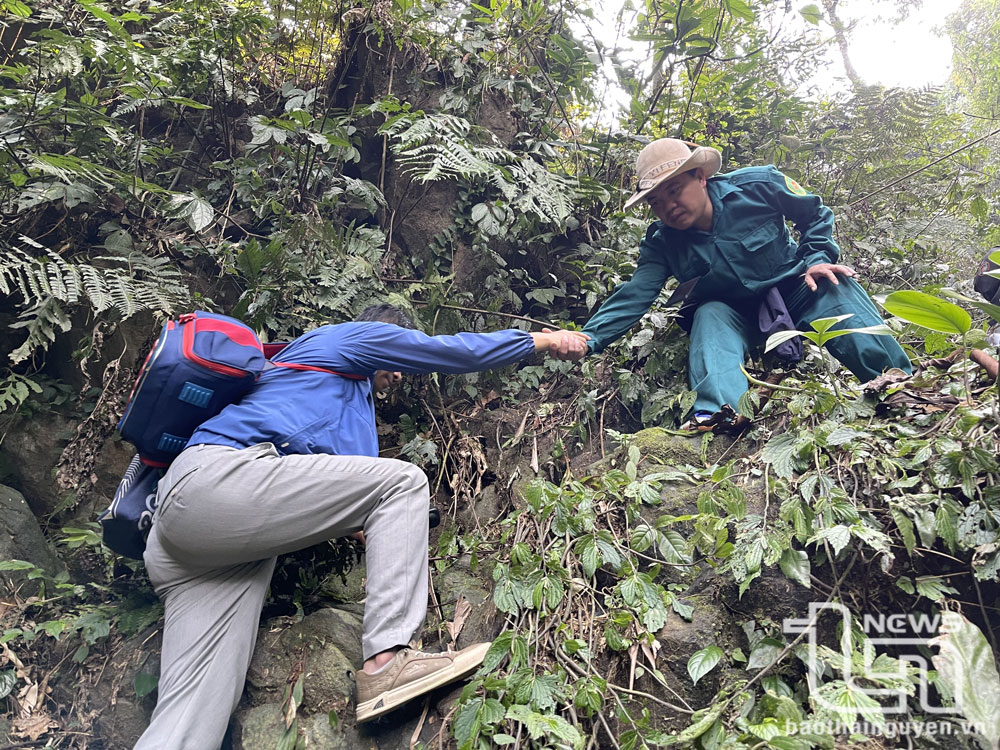 |
| Journalist Duong Hung (right) helps survey team members overcome difficult roads. |
The forest in late spring was so green it was heartbreaking. The Kem stream meandered and was crystal clear, and the birds sang clearly in the thin mist. The leaves were soaked with water, soft and moist as if they had just emerged from a long sleep. But the deeper we went, the more challenging the forest became. Steep slopes followed each other, the path was only wide enough for one foot, on one side was a cliff, on the other side was a deep abyss. At one point, a fallen tree crossed the stream just wide enough for one foot - one wrong step and you would fall.
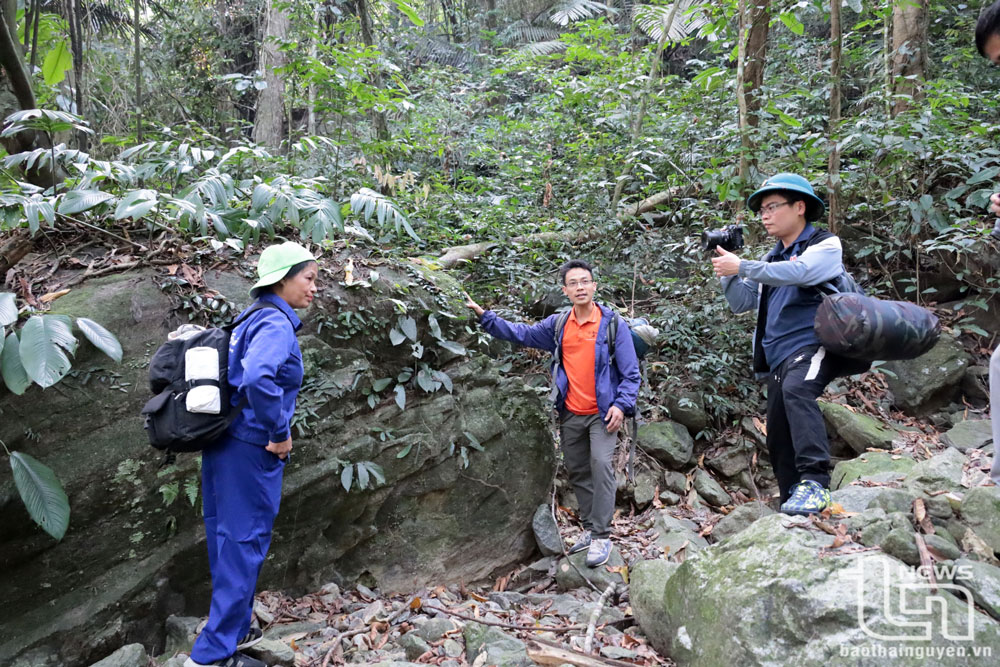 |
| Working in the forest. |
After more than an hour of climbing, sweat soaked our backs, and our backpacks felt like they had become ten kilos heavier. Halfway up the mountain, journalist Nguyen Ngoc got a cramp and had to drag his feet with difficulty. I discovered blood seeping down my pants - the leeches had left their "marks" without me noticing. The group stopped at an old tree, shared rice balls, sesame salt, and sips of water, shared some of our backpacks, and helped the weaker ones continue. The camaraderie was quiet but warm - like a small stream flowing between the rocks of the mountain.
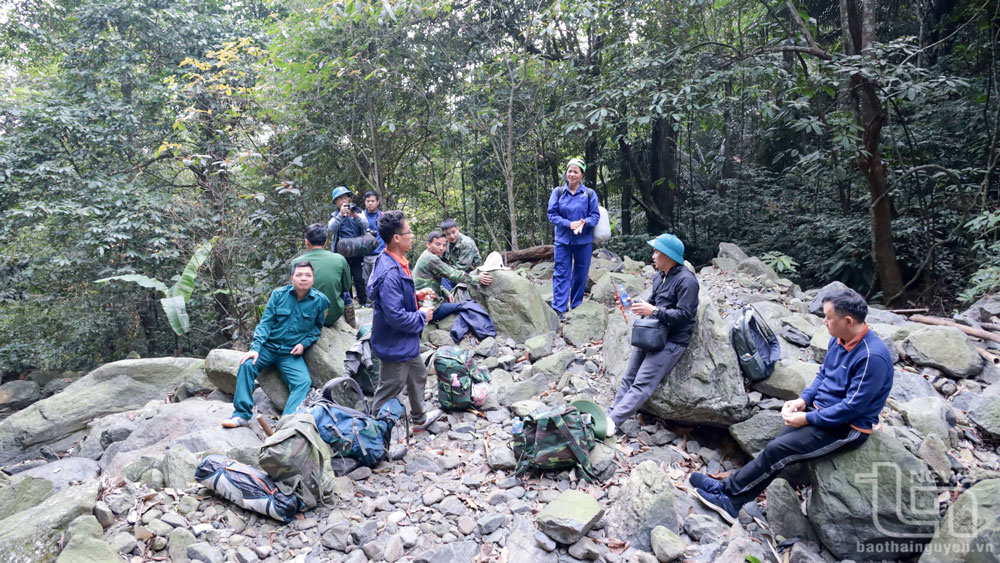 |
| A break in the jungle. |
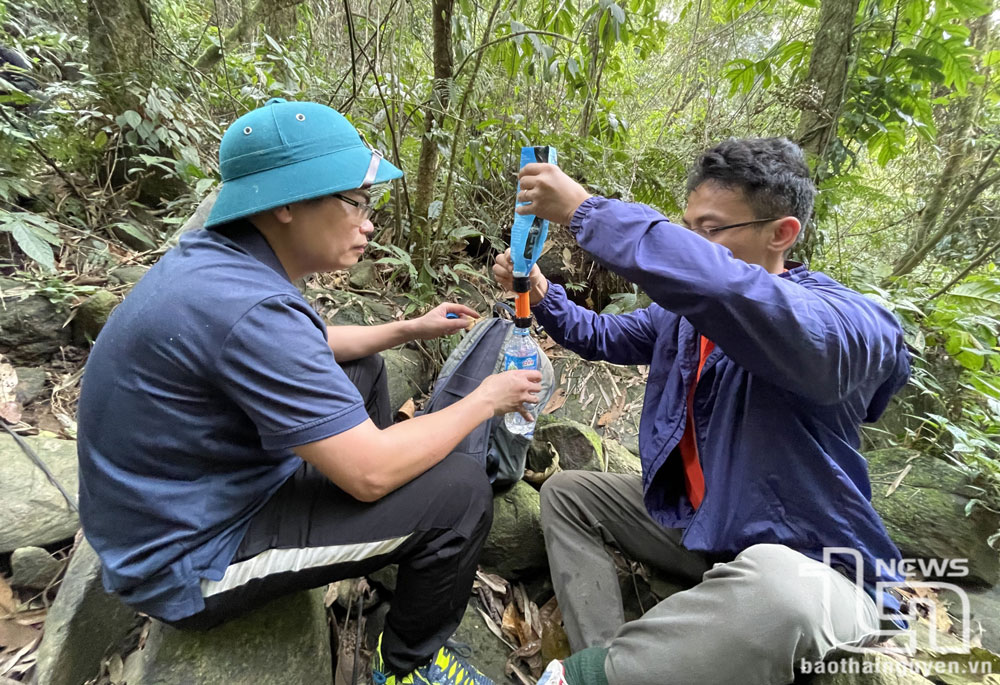 |
| Due to too much luggage, the group members limited their water intake and drank spring water filtered through specialized filters. |
Eight hours. When the sunlight slanted through the canopy, a soft yellow color poured down on patches of forest, we reached the top of the mountain. And then, before our eyes appeared a group of ancient tea trees: 18 tea trees scattered in the middle of the forest, large trunks, roots deeply rooted in the ground, canopy reaching up to several dozen meters high. The survey team measured the largest tree, with a base circumference of 1.5m, thick bark, covered with moss. The smallest tree had a base circumference of 80cm, and was more than 10m high, in addition, there were hundreds of small tea trees around. The tea trees grew here without rows or paths, stretching out to spread their shade, creating a separate world as if they had just awakened after centuries of silence.
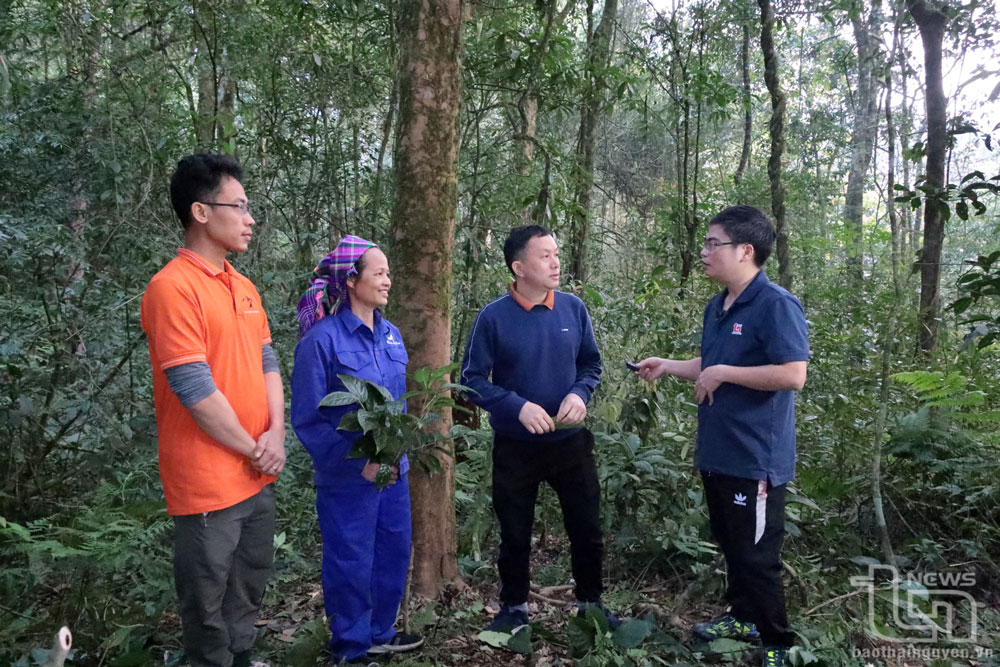 |
| Journalist Quoc Tuan (far right) talks with scientists and tea artisans during a discussion held next to an ancient tea tree on the mountain top. |
Forest with ancient tea leaves
As soon as the sun set, darkness fell, as quickly as someone turned off the light switch. The whole group rushed to measure, take photos, locate GPS, and record the current status of each tree. At 7 pm, we set up tents, lit a fire, and cooked. To the sound of boiling water on the stove and an antique teapot, everyone talked about life, current events, and their passion for tea. That was enough to warm up a night in the forest.
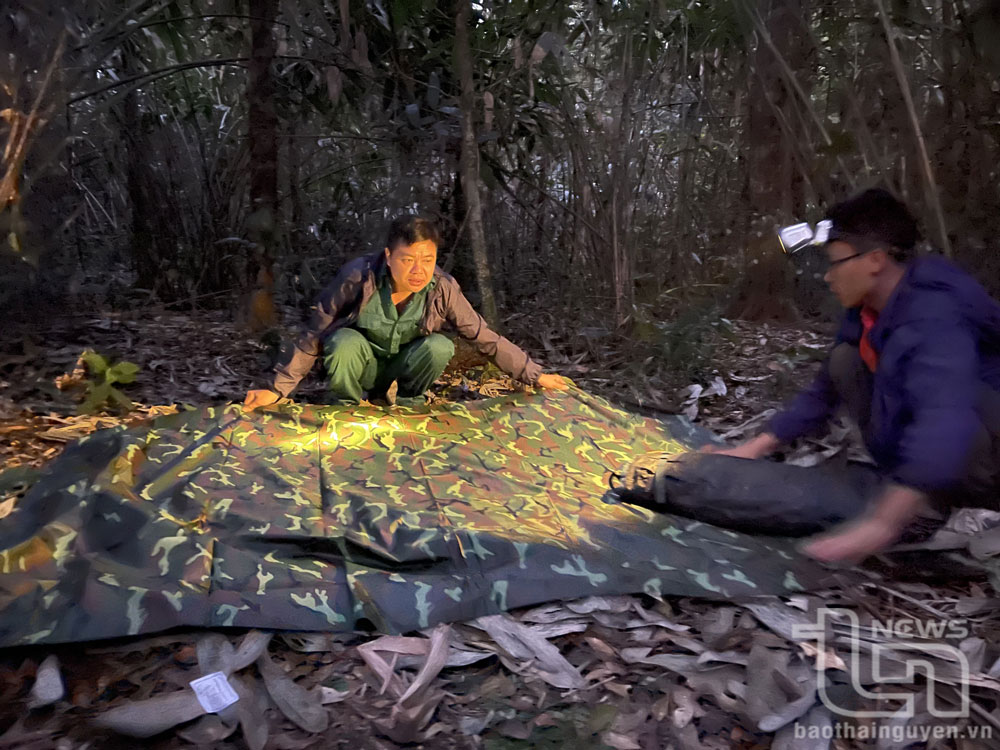 |
| Set up camp overnight in the deep forest. |
We sat together, in the dim light, sharing a cup of hot tea. The tea was brewed from ancient tea buds on the mountain top, with an indescribable flavor. Artisan Hai told the story of the first time she discovered the ancient tea tree, it took her 8 hours to climb the forest, then she was surprised when she touched the tree trunk with her whole arm, but this was the first time in her life she enjoyed ancient tea on the mountain top.
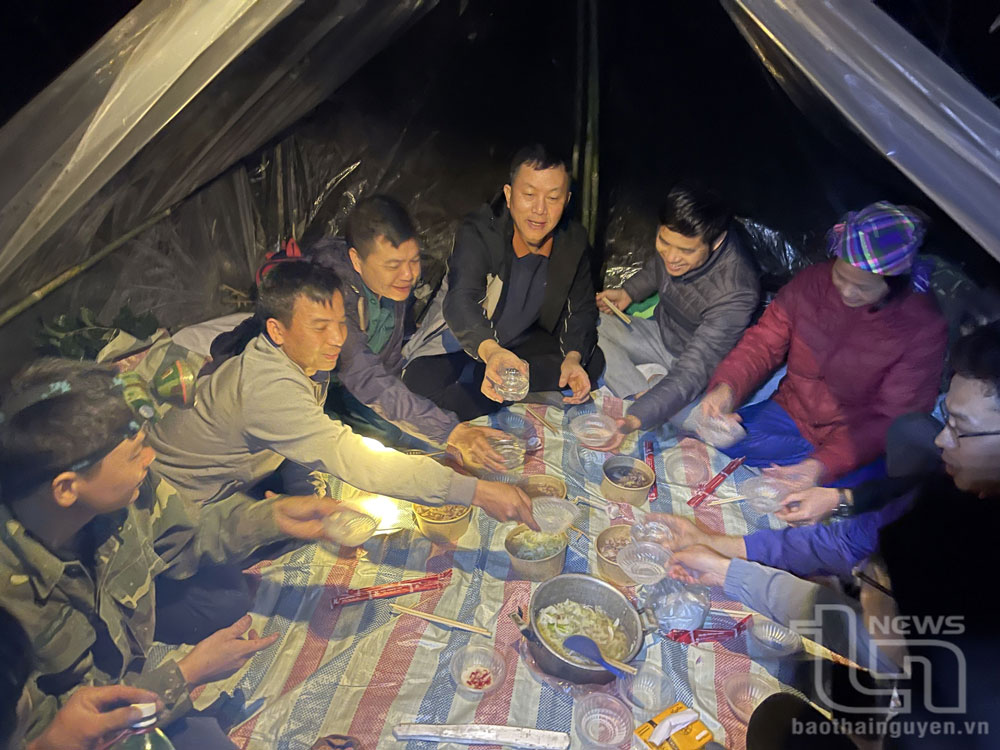 |
| The survey team gathered to eat in the middle of the forest. |
Associate Professor Truong enthusiastically told about the traces of ancient tea in history books: Since the beginning of the 20th century, Ph. Ebevharart (France) discovered wild tea trees growing in the Tam Dao forest area at an altitude of about 900m above sea level. The tea trees are 8-10m high, with a trunk diameter of 40cm, growing among bamboo forests. And now, we might be sitting in the middle of that tea population, in the middle of a real forest, in the middle of reality.
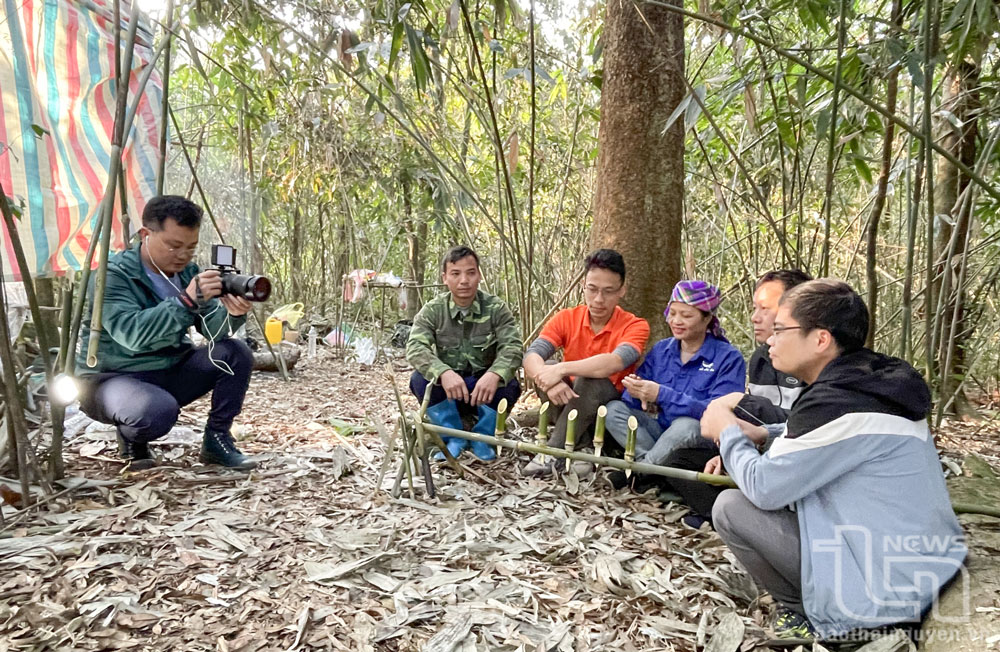 |
| Journalist Nguyen Ngoc works, conducts a tea tasting and field talk show in the middle of the deep forest. |
The night was quiet. I lay in my sleeping bag, listening to the wind blowing through the leaves, listening to the cries of wild animals mixed with the rustling of the forest. Every sound seemed to echo back inside, awakening something primitive in my heart. The towering tea trees outside seemed to be guarding the memories of a region.
That night, we believed that the ancient tea tree had “seen” us - people who quietly came with love and belief that: protecting the tree means preserving its roots, means not letting a part of the memory of this land fall into oblivion.
Source: https://baothainguyen.vn/xa-hoi/202506/trang-dem-giua-rung-gia-va-nhung-dau-chan-tim-cay-che-co-d4a2108/





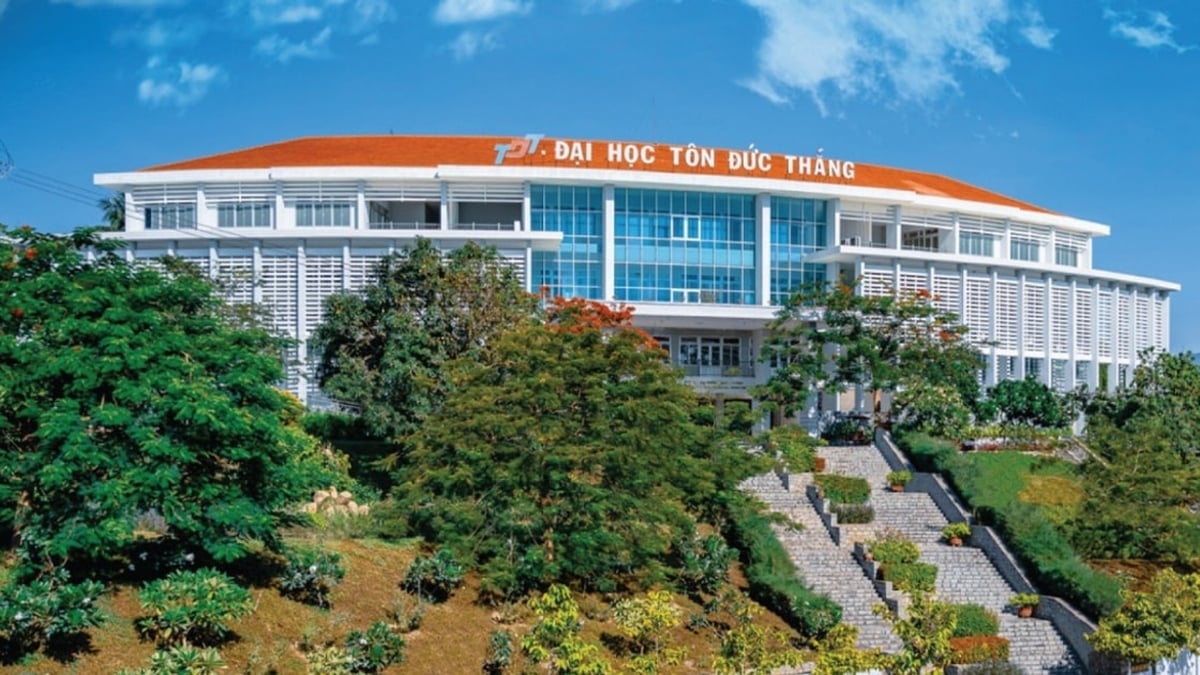


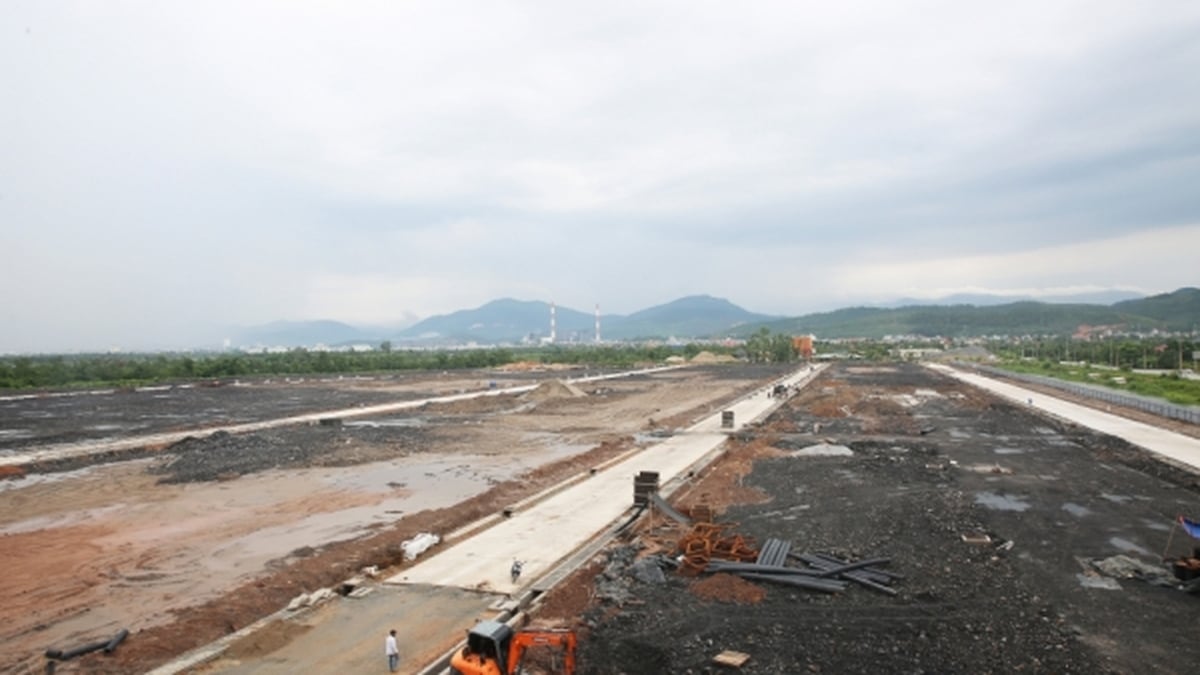
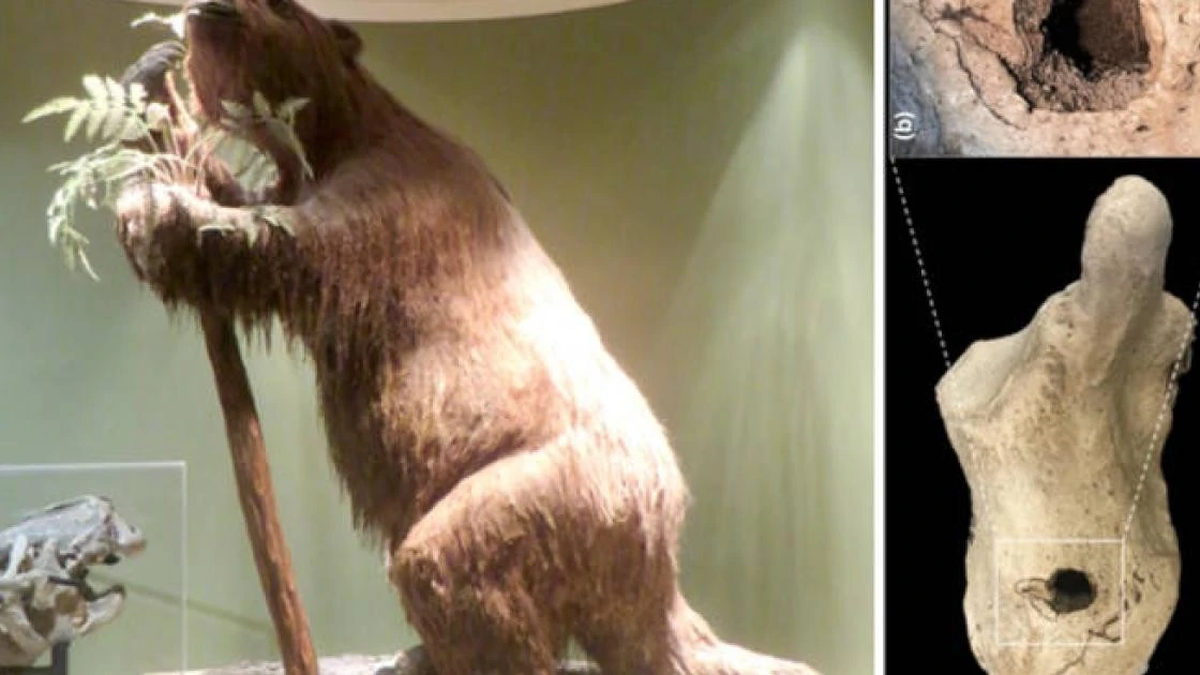



























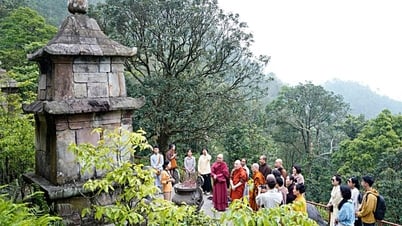





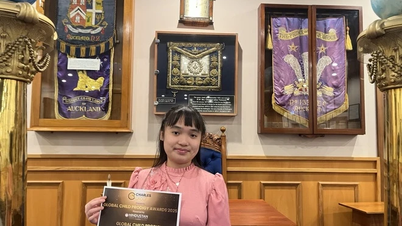
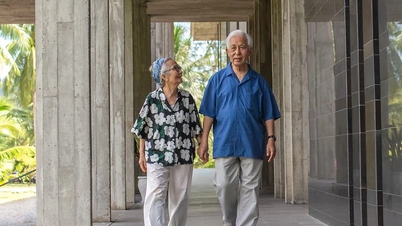























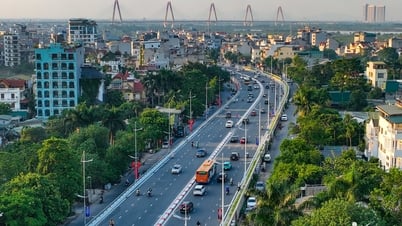





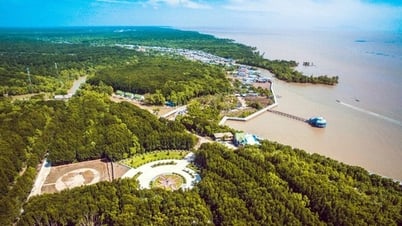


























Comment (0)